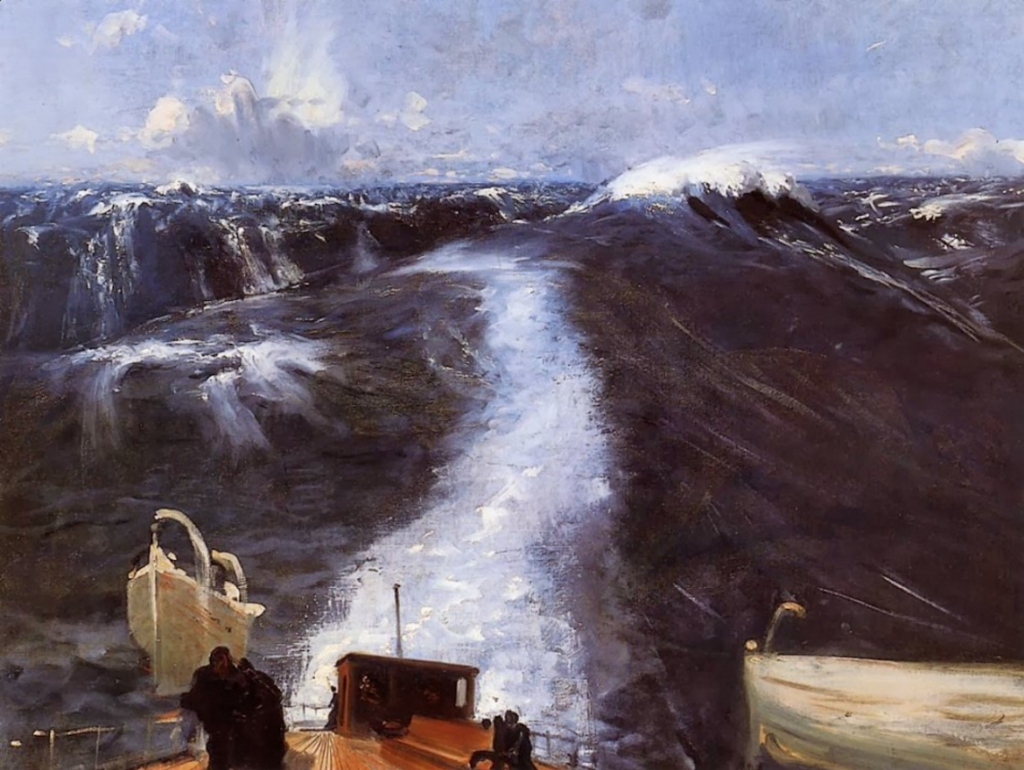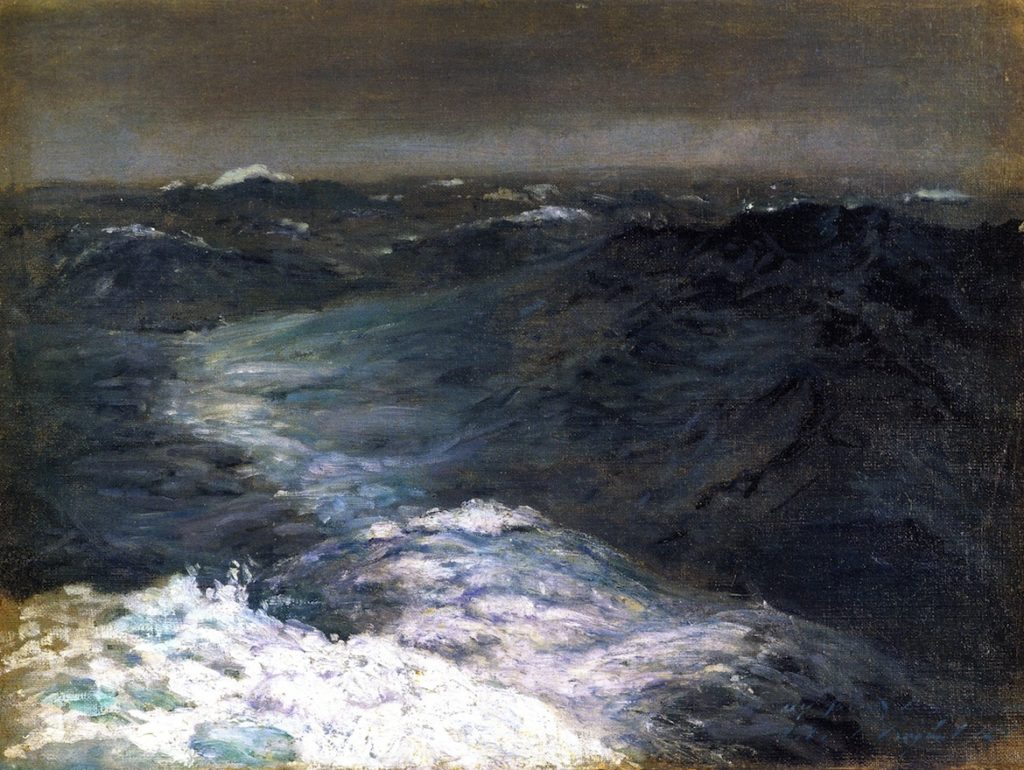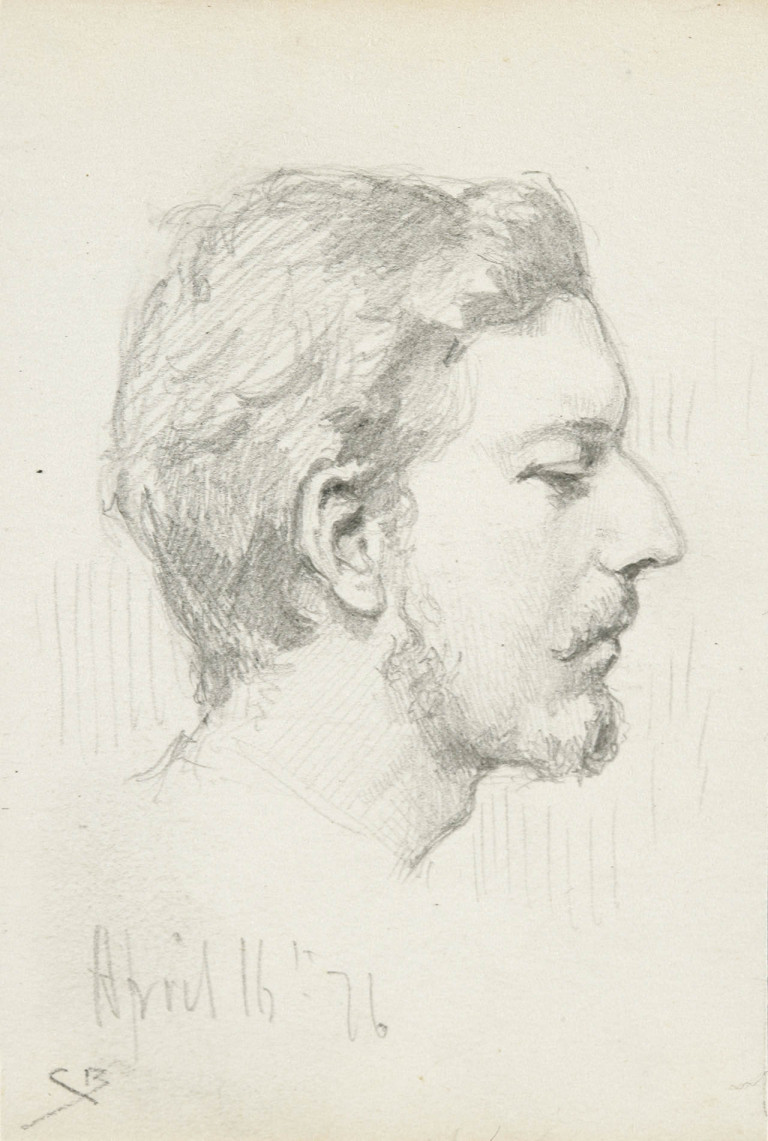John Singer Sargent was perhaps the greatest traveling artist of his day—the last days of the mighty sailing ships—before electricity, before “aeroplanes”, before technology as we know it. He was to bridge the transition between then and now by living his life and doing what he wanted: looking and painting what he saw. He would witness the rise of technology, its abuse on the battlefields of World War I, and watch his Gilded Age with all its finery come crashing down around him, and a new world—made from its ashes—begin. Born in Italy in 1856 to a family of wandering, American

expatriates, Sargent was home-schooled “on the road” by the contextual beauty of European landscapes (also by well-educated parents who taught him art, history, math, music, and a few languages) – a fertile soil in which the young artist was planted, from which superior skills would grow. As an adult he voyaged to England, Italy, Morocco, Egypt, Syria, Palestine, Spain, Portugal, Greece, the Alps, Norway, and the US. In 1925 he stopped traveling for good, his traveling companion of many years—Voltaire’s Dictionnaire philosophique—on the table beside him.

Sargent was 20 years old when he took to the sea to explore the world. “Atlantic Storm” and Mid-ocean, Mid-winter” are paintings from these early voyages; Beckwith sketched him that same year. Sargent was not an established artist yet, but almost. The photograph is from a few years later, around the time of the Madame X scandal–which established him–a bit of bravado already apparent.
In 1876 the world was still much the way it had been for hundreds of years. Clothes were still handmade, and very expensive. Trains were still relatively new. Electricity was already a twinkle in Tesla’s eye. (Funny, how the man who invented Alternating Current seems to have done so for humanitarian reasons but was met with a less-than-humanitarian world).
This website would be just words without these amazing sources for these amazing images: learninglab.si.edu; the-athenaeum.org; jssgallery.org; commons.wikimedia.org - Google Art Project; Google Arts & Culture; poulwebb.blogspot.com
- Thank you+


